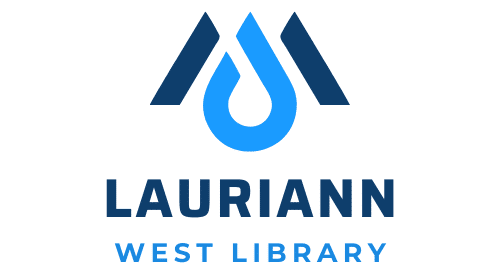Green belts serve a unique purpose in the UK’s spatial planning and have become a significant element of the country’s urban landscape. The existence of these green spaces and the policies that govern them have far-reaching implications, not least on real estate development. This article will explore the impact of the UK’s Green Belt policy on real estate development, and delve into the nuances of this phenomenon.
Understanding the Green Belt policy
Before dissecting the impact of the Green Belt policy on real estate development, it is crucial to understand what the policy entails. The Green Belt policy, first introduced in the UK in the 1950s, was designed to prevent urban sprawl by keeping land permanently open. These areas are primarily agricultural land, forests, or other natural landscapes that serve as a buffer zone around urban centres, preventing their unchecked expansion.
Also read : What Are Innovative Ways to Integrate Urban Farming in Residential Real Estate?
The policy has remained robust over the years, and today, more than 13% of England’s land area is designated as green belt. While the policy has been successful in maintaining green spaces and preserving the countryside, it has also raised questions about its implications for real estate development.
Housing Supply and Demand
One of the major impacts of the Green Belt policy on real estate development is in the realm of housing supply and demand. With land in the Green Belt areas off-limits for development, the availability of land for new housing in the UK, particularly in and around major cities, is severely limited.
Also read : What Are the Fiscal Implications of the UK’s Help to Buy Scheme for First-Time Homebuyers?
This limitation has significant implications on the supply-side of the housing market. With fewer houses being built, the supply cannot keep pace with the growing demand. This imbalance results in rising house prices, making home ownership increasingly unaffordable for many British citizens. It’s a classic case of the laws of supply and demand at work, with the Green Belt policy acting as a restricting factor on housing supply.
Inequality in Housing
Another consequence of the Green Belt policy on real estate development is the deepening of inequality in housing. As the price of housing in urban areas increases due to scarcity of supply, it is the low and middle-income households that are most affected. They are increasingly priced out of the market, leading to a steep socio-economic divide in housing.
The lack of affordable housing in cities and their surrounding areas has led some to question the fairness of the Green Belt policy. Critics argue that it represents a form of social inequality, as it disproportionately benefits those who can afford to live in the limited housing within the green belt, while leaving others to contend with high housing costs or long commutes.
Impact on Real Estate Developers
For real estate developers, the Green Belt policy presents a complex challenge. On one hand, the restricted land availability in lucrative areas near urban centers limits their potential for new projects. This can lead to reduced profits and stunted business growth.
On the other hand, the high prices resulting from the scarcity of housing can provide the opportunity for increased profit margins on the limited projects they are able to carry out. In some cases, developers might seek out land in more distant locations, where development is not restricted by Green Belt policies, to carry out their projects. However, these areas may not offer the same level of demand or profitability as the more desirable locations near urban centers.
The Future of Green Belt Policy and Real Estate Development
The future of the UK’s Green Belt policy and its impact on real estate development remains uncertain. There have been calls for a review of the policy, with some arguing for a more flexible approach that allows for some development in Green Belt areas to ease housing pressure.
However, such proposals are contentious, as they risk compromising the environmental and aesthetic benefits of the Green Belt. It’s a delicate balancing act between preserving green spaces and meeting the housing needs of the population. The challenge for policymakers and real estate developers alike is to find a sustainable solution that achieves both these objectives.
Green Belt Policy: An In-depth Analysis
Let’s delve deeper into the Green Belt policy and its impact on real estate development in the UK. The policy, in essence, ensures that a substantial portion of land remains open and undeveloped, acting as a green buffer zone around urban centres. These green belts, which constitute approximately 13% of England’s total land area, have been successful in preserving natural landscapes and curbing urban sprawl. However, their impact on real estate development has raised many questions and debates.
One of the main effects of the policy is the limitation it imposes on the availability of land for housing development, particularly in and around major cities. As a result, the supply of new housing has been unable to meet the growing demand, leading to a steep increase in house prices. This scenario is a classic illustration of the economic principle of supply and demand, with the Green Belt policy acting as a key limiting factor.
Moreover, the policy has indirectly contributed to deepening inequality in housing. As housing prices in urban areas rise due to supply constraints, low and middle-income households are the most affected, often being priced out of the market. This situation has led to a widening socio-economic divide in housing, with critics pointing out the inherent social inequality of the policy.
For real estate developers, the Green Belt policy poses a significant challenge. While the restricted land availability curtails the scope for new projects, the high prices arising from housing scarcity can potentially yield higher profit margins on the few projects they can undertake. Some developers may opt for land in distant locations, unrestricted by the Green Belt policy, but these areas may not present the same level of demand or profitability.
Conclusion: The Green Belt Policy’s Future and Its Implications
The future of the Green Belt policy and its implications for real estate development remain a topic of ongoing debate. Calls for a review of the policy suggest a more flexible approach that allows for some development in Green Belt areas could alleviate the intense pressure on housing.
However, any change to the policy must be navigated with caution to avoid compromising the environmental and aesthetic value of these green spaces. It is a delicate juggling act – preserving the green belts while meeting the housing needs of the country’s growing population. For policymakers and real estate developers alike, the challenge lies in finding a sustainable solution that balances both these objectives.
In conclusion, the Green Belt policy has undeniable impacts on real estate development in the UK, influencing housing supply, demand, pricing, and socio-economic inequality. While it is crucial for preserving the country’s green landscapes and curbing urban sprawl, it also presents significant challenges for housing development. As we move into the future, it will be essential to strike a sustainable balance between environmental preservation and housing development in the face of this policy.











